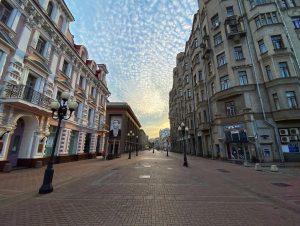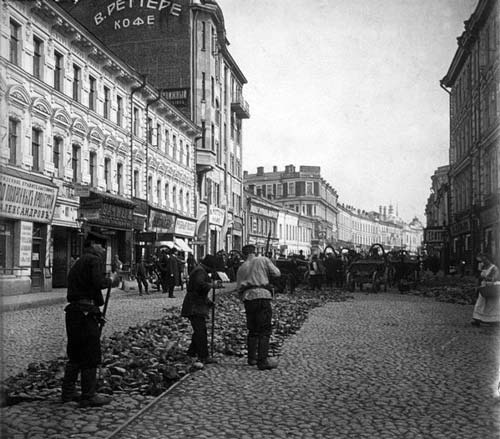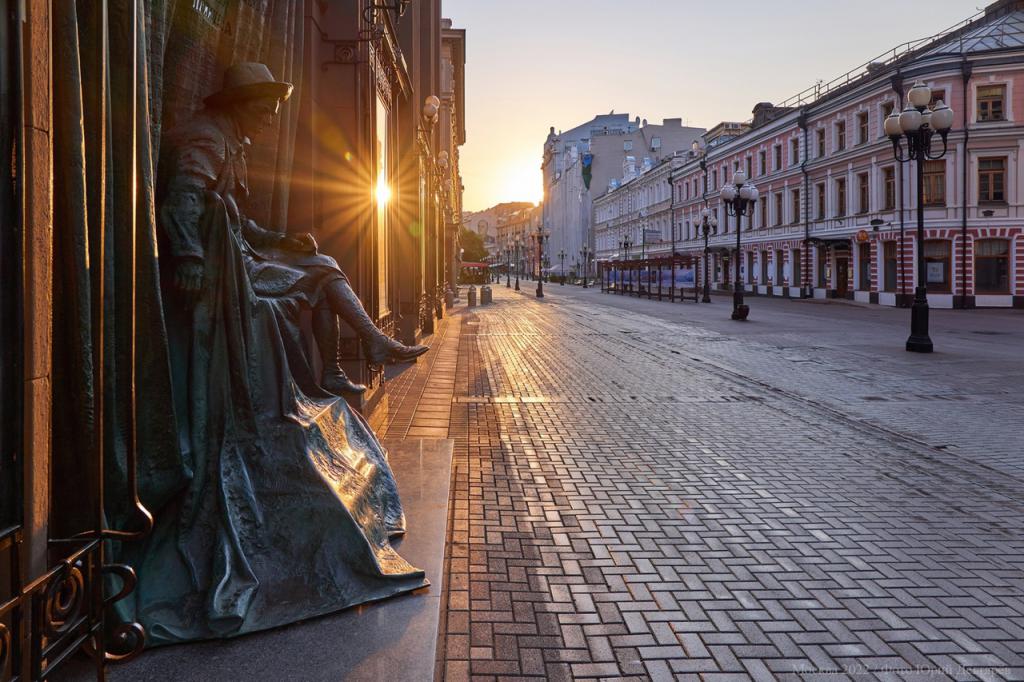Arbat Street

Arbat Street, the main pedestrian artery of old Moscow, is a unique blend of history, culture, and modern urban life, attracting both Muscovites and countless visitors to the capital. Its history begins in the depths of time, and its name, first mentioned in chronicles from 1493, still sparks debate among scholars. The most convincing theory is that it originates from the Arabic word “arbad,” meaning “suburb,” which accurately reflected the status of this area in medieval Moscow. Initially, “Arbat” referred to an extensive district between the modern street and Yermolayevsky Lane, which served as an important trade route for caravans of Eastern merchants and the road to Smolensk. Precisely for this reason, Arbat often found itself in the path of enemies, be it the Poles in the 17th century or the French in 1812, which led to the stationing of Streltsy regiments here to protect the approaches to the Kremlin. The area’s artisanal character is cemented in the names of adjoining lanes-Plotnikov (Carpenters), Serebryany (Silversmiths), Denezhny (Moneymen)-where masters of their crafts lived and worked. A radical transformation of Arbat occurred in the 18th century after a severe fire in 1736, when it began to be rebuilt and turned into an aristocratic suburb, populated by nobility who chose not to move to the new capital, St. Petersburg. After the Moscow fire of 1812, Arbat finally took shape as a symbol of the leisurely and cozy life of the Moscow nobility, as later described by many writers. However, by the end of the 19th century, the street’s appearance changed sharply again: the aristocracy was replaced by the merchant class, facilitated by the nearby appearance of the Bryansk Railway Station and the abolition of serfdom, which forced many landowners to sell their estates. In their place, apartment buildings grew, and shops and restaurants opened on the ground floors, turning Arbat into a noisy business thoroughfare, where a horse-drawn tram (konka) was first introduced, then a tram, and later a trolleybus. Arbat acquired its modern appearance in 1986 when it became Moscow’s first pedestrian zone, turning into a veritable open-air museum, attracting street artists, musicians, and tourists. Strolling along Arbat today, one can see many iconic buildings, each a page of history. The beginning of the street from Arbat Gate Square is marked by the famous “Praga” restaurant in the corner building with a semicircular colonnade. Further along the even side is the Vakhtangov Theatre, built after the war on the site of a bombed-out mansion, and building № 30 is known for its legendary pet shop. The small estate of the Strakhov-Testov family at № 36 miraculously preserves the spirit of post-fire Moscow from the 1820s, while the street ends with the monumental building of a gastronome (food store), constructed in 1928. On the odd side, attention is drawn to the blue two-story house at № 53, where Alexander Pushkin lived for the first year after his wedding. The neighboring house at № 43 is associated with the name of Bulat Okudzhava, whose monument is installed nearby and whose line “Ah, Arbat, my Arbat, you are my religion” became the street’s unofficial anthem. No less famous is building № 35, the “House with the Knight,” associated with Bulgakov’s novel “The Master and Margarita,” and in one of the wings of the high-rise at № 51 lived Anatoly Rybakov, author of “Children of the Arbat.” Thus, Arbat remains not just a street, but a living embodiment of the city’s memory, where eras, destinies, and cultural layers have intertwined, creating a unique atmosphere that is impossible to forget.
Address: Moscow, Arbat St.

